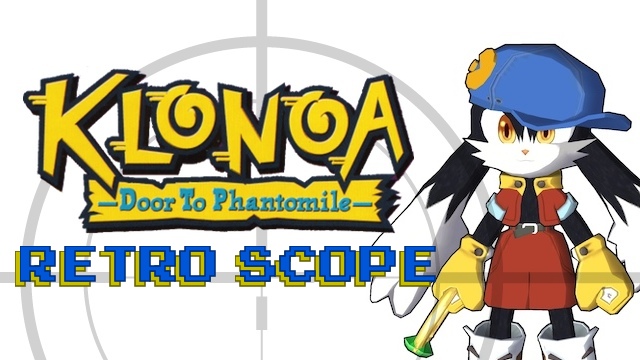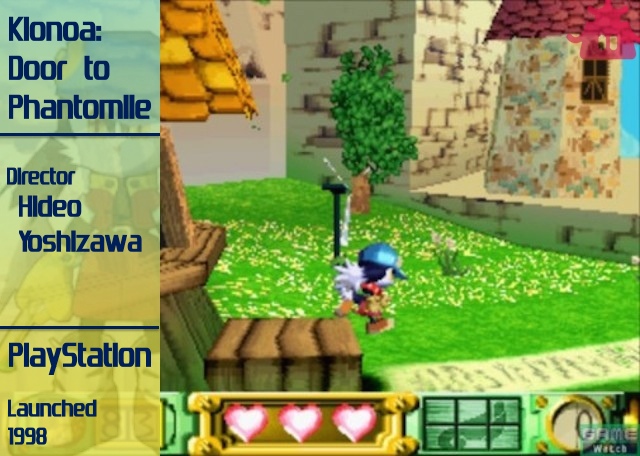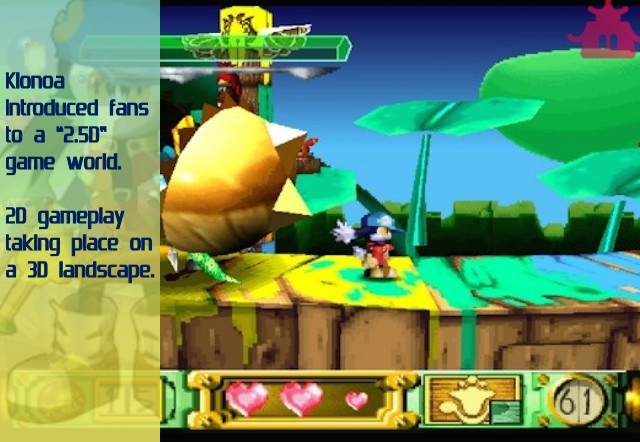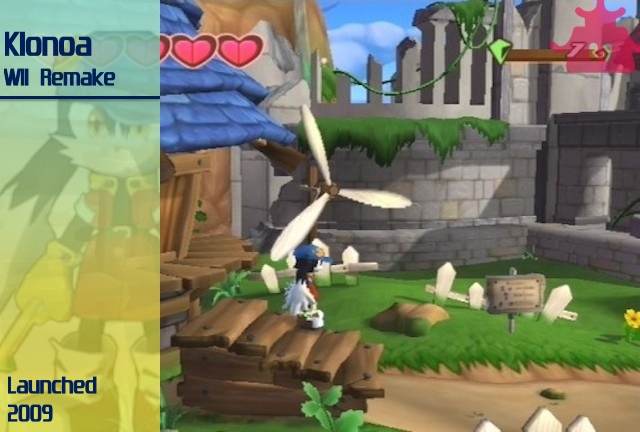
Klonoa: Door to Phantomile didn’t start out as a Klonoa game. When series creator Hideo Yoshizawa of Namco began work on this quirky PlayStation title, it was intended to have a licensed character as the lead. In a twist of fate similar to Nintendo’s Donkey Kong arcade game, the departure of the licensed properties and characters yielded a more enjoyable title than what might have been. Klonoa may not have the pedigree of Sonic or Super Mario, but it’s a solid franchise that continues to yield fun, though niche, adventures. It also harks back to some of the important design choices that have continued to make Nintendo’s games so beloved and accessible; indeed, the Klonoa franchise has come to call Nintendo systems home more than any other in the years since it launched on Sony’s PlayStation.
Yoshizawa’s marching orders from the brass at Namco were simple; they wanted a new action game. In the world post-Super Mario 64, developers had become 3D obsessed, foregoing traditional 2D games nearly en masse following the release of Nintendo’s revolutionary title. Yoshizawa was happy to oblige his bosses, but had no intentions of conforming to the trend of the day. To him, 3D games were too complicated to play, as the added dimension made attacking enemies and navigating the game world more difficult than in a 2D one. Yoshizawa did want to make a title that incorporated 3D, but in a different way, a sort of “2.5D” that would mix elements of both perspectives. Thus was born the concept of Klonoa‘s gameplay, a title that would allow for 2D movement in a 3D world.

Klonoa himself has an interesting origin, as he’s the result of multiple bids around Namco’s offices to design the lead for Yoshizawa’s new game. While that’s not a totally uncommon way of coming up with original characters in a game development studio, it is worth noting that a passing comment about Klonoa’s appearance from a member of the sales team nearly upended the title’s development. They suggested that because Klonoa has big, floppy ears, that he should be able to fly. Yoshizawa immediately dismissed the notion, as the title would go from being one about “action” and instead become about “flying”; he’d have to change the entire structure of the game! Still, the notion wouldn’t release itself from his mind, as he felt if that lone sales team member thought Klonoa should fly because of the way his ears looked, everyone else might start expecting it, too. In his self-imposed state of paranoia, Yoshizawa decided that as a compromise, rather than being able to fly, Klonoa would instead be able to flutter and cover small distances. This happy medium meant expectations would be met without breaking level designs. Talk about being detail oriented!
The game itself is stuffed with charisma, as Klonoa has a cute cast and a fairly emotional story. I will say that the cinema scenes and characters do border on being overly cutesy, similar to Sonic the Hedgehog games for the past fifteen years or so, which might turn off some players. Klonoa does offer the chance to skip past its cut scenes, which is nice because it would be a real shame for players to miss out on all the excellent gameplay just because they hate Huepow. Passing on the video scenes might leave players with gaps in the narrative, but they can take in the game all the same without them (those cold, evil people). Regardless, I recommend anyone who does play Klonoa to sit back and enjoy the drama, because it pays off in the end! (Seriously, some people might tear up– members of the development team apparently did).

Klonoa is reminiscent of Crash Bandicoot in that it doesn’t offer traditional 3D gameplay. Players navigated the environment traveling from left to right on a 2D plane, but the world was rendered in 3D and thus allowing Klonoa to also move into the screen by scrolling the environment in different directions. Essentially, the player maneuvered Klonoa along twisting pathways that shifted the perspective and created some very interesting visual trickery. Klonoa‘s other gameplay hook came in the form of how the character interacted with enemies. Yoshizawa wanted to make a title where players captured baddies and used them to their advantage. To achieve this, Klonoa was able to snag enemies using his special ring and then either fling them for offense or use them to initiate a double-jump by launching off of ensnared foes mid-leap.

The mechanics were immensely satisfying and resulted in some very clever puzzles that required players to determine the best way to utilize the baddies they encountered as tools, to not just see them as obstacles. Klonoa could fling enemies into the sky, the ground, left, right, and even into or out of the screen! This range of motion made for some interesting exploration, as certain secrets would float inconspicuously in front of players’ faces and could be easily missed if they weren’t paying attention. Klonoa’s unique controls were both intuitive and fun, and demonstrated that there was still plenty of unique gameplay to mine from 2D action games in a time when the industry had nearly abandoned them.
Klonoa as a series, as I mentioned above, eventually came to call Nintendo consoles home. The last two entries in the series were Klonoa: Empire of Dreams and Klonoa 2: Dream Champ Tournament on Game Boy Advance (which are both available for download from the Wii U eShop). This original that I’ve been discussing was actually remade for the Wii quite faithfully back in 2009, for anyone who wants to give the game a whirl on a Nintendo platform. The graphics have been substantially upscaled and reworked on the Wii, and subtle tweaks to Klonoa’s movements make the game a relatively smoother experience. I recommend giving it a try for anyone who doesn’t feel like tracking down the original or downloading it from PlayStation Network. Klonoa is the result of Namco letting Yoshizawa follow his gut and make a game that innovated rather than conformed. It’s as engaging today as it was back in 1998, so be sure to give this overlooked series a shot!




 ShareThis
ShareThis





